ChatGPT:Mdina, also known as the “Silent City,” is a fortified medieval town located on a hill in the central part of Malta. With a population of around 300 residents, it is known for its narrow, winding streets, Baroque and medieval architecture, and historical buildings. Key highlights include St. Paul’s Cathedral, the Mdina Gate, and the Palazzo Falson. Mdina offers a tranquil atmosphere, rich history, and stunning views of the Maltese countryside, making it a popular destination for tourists and a UNESCO World Heritage candidate.
Mdina’s history dates back over 4,000 years, with its origins as a settlement established by the Phoenicians around 700 BCE. Known as “Maleth,” it became an important city due to its strategic inland location.
Ancient and Medieval Periods
- Phoenician and Roman Era:
- The Phoenicians fortified the city, which was later expanded by the Romans, who renamed it “Melite.”
- During Roman rule, Mdina became a significant administrative center.
- Byzantine and Arab Influence:
- After the fall of the Roman Empire, Mdina was controlled by the Byzantines and later the Arabs in the 9th century.
- The Arabs reduced the city’s size, building robust fortifications and renaming it “Medina,” which means “city” in Arabic. The city began to take on its current form, with narrow, winding streets typical of Arab urban design.
- Norman Conquest and Medieval Mdina:
- In 1091, the Normans, under Count Roger I, captured Malta, and Mdina remained a key stronghold.
- The Normans built additional fortifications, and Mdina thrived as a feudal seat of power.
Knights of St. John and Baroque Transformation
- The Knights of St. John:
- The arrival of the Knights of St. John in 1530 marked a new era. While Valletta became the new administrative capital, Mdina retained its status as the aristocratic and ecclesiastical center.
- The 1693 Sicily earthquake caused significant damage to Mdina. During the rebuilding, the city took on much of its current Baroque character, with the reconstruction of St. Paul’s Cathedral and several palaces.
Modern Era
- British Rule and Independence:
- Under British rule (1800-1964), Mdina remained a quiet, aristocratic enclave.
- After Malta’s independence in 1964, Mdina’s historical and architectural significance gained recognition, leading to preservation efforts.
Today
Mdina is a tourist attraction, celebrated for its historical integrity and serene ambiance. It offers visitors a journey through various periods of Maltese history, showcasing a blend of architectural styles and cultural influences from its diverse past.
Key Historical Monuments and Features in Mdina, Malta
- Mdina Gate (Main Gate):
- The main entrance to the city, built in 1724, is a grand example of Baroque architecture. It serves as an iconic symbol of Mdina.
- St. Paul’s Cathedral:
- Rebuilt in the Baroque style after the 1693 earthquake, this cathedral is dedicated to St. Paul the Apostle. It features stunning frescoes, marble works, and a beautiful dome.
- Palazzo Falson (Norman House):
- A well-preserved medieval palace that now serves as a museum. It houses an extensive collection of antiques, art, and historical artifacts.
- Banca Giuratale:
- Built in the 18th century, it served as the town hall. The building showcases fine Baroque architecture and now houses the Mdina local council.
- Mdina Dungeons:
- Located beneath the Vilhena Palace, these dungeons offer a glimpse into medieval justice and punishment methods.
- Vilhena Palace:
- Constructed in the early 18th century in French Baroque style, it now hosts the National Museum of Natural History.
- St. Agatha’s Chapel:
- A small chapel with origins dating back to the Norman period, dedicated to St. Agatha. It features exquisite frescoes and historical religious art.
- Bastions and Fortifications:
- The city is encircled by robust fortifications, including bastions and walls built by various rulers over centuries. These structures offer panoramic views of the surrounding countryside.
- Greek’s Gate:
- Another entrance to the city, historically used for administrative and military purposes. It is less ornate than the Mdina Gate but equally significant.
- Carmelite Priory:
- A functioning monastery with a Baroque church. It offers a serene courtyard and a museum showcasing religious art and artifacts.
- St. Nicholas’ Chapel:
- A small chapel known for its historical significance and beautiful architecture.
Specific Features
- Narrow, Winding Streets: The medieval layout of Mdina includes narrow, winding streets, designed to confuse invaders and provide shade.
- Baroque and Medieval Architecture: The blend of architectural styles, from medieval to Baroque, reflects the city’s diverse historical influences.
- Palatial Residences: Numerous palatial homes, some still privately owned, showcase the city’s aristocratic heritage.
- Quiet Ambiance: Known as the “Silent City,” Mdina maintains a peaceful atmosphere, largely due to restricted vehicle access.
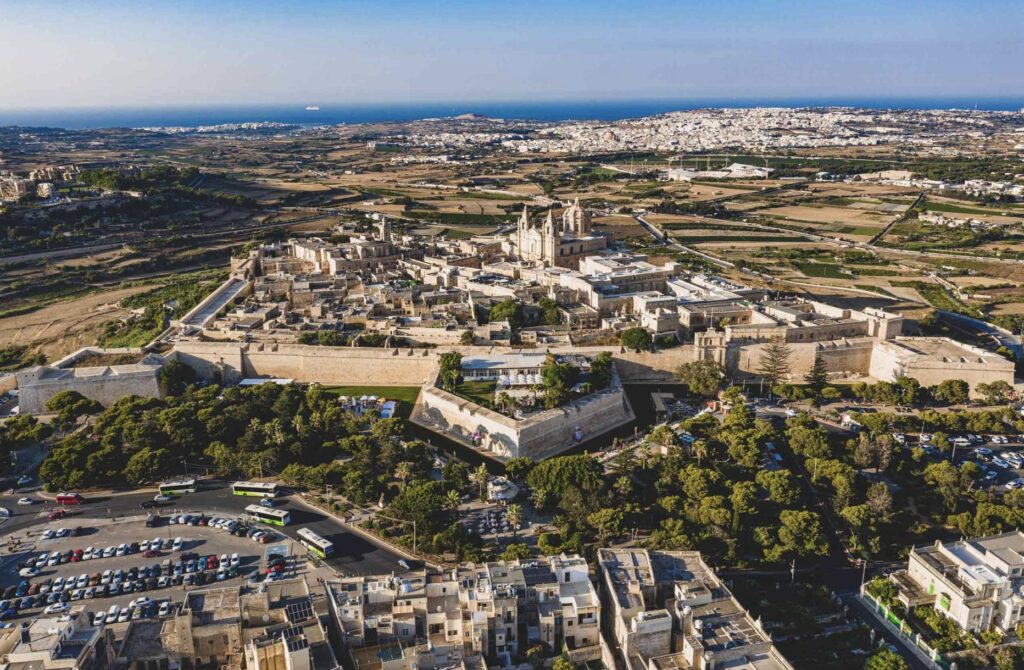
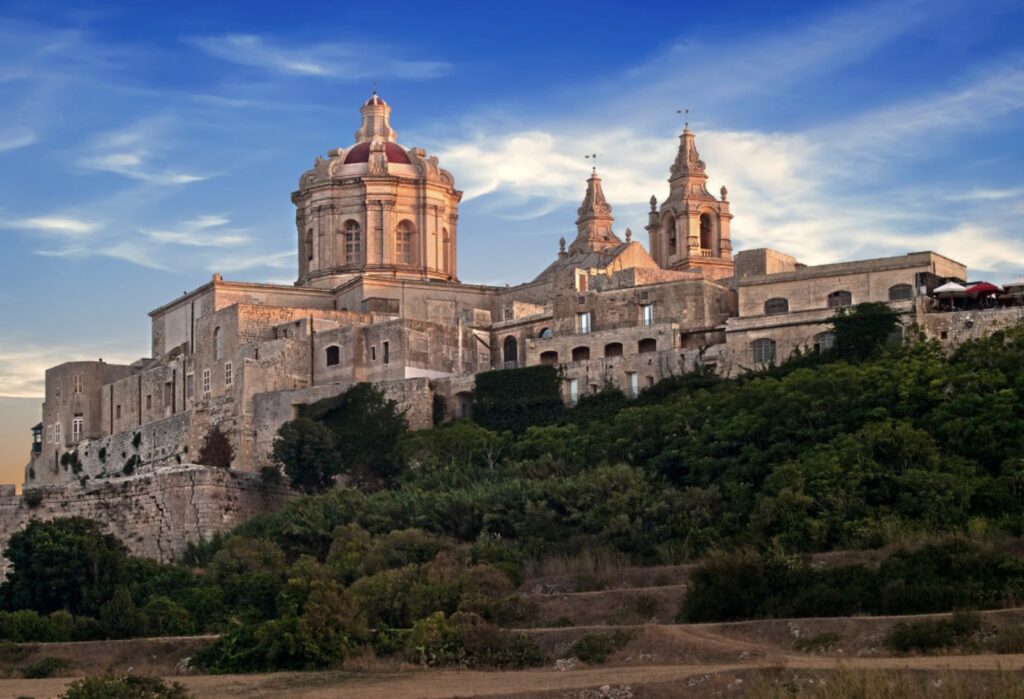
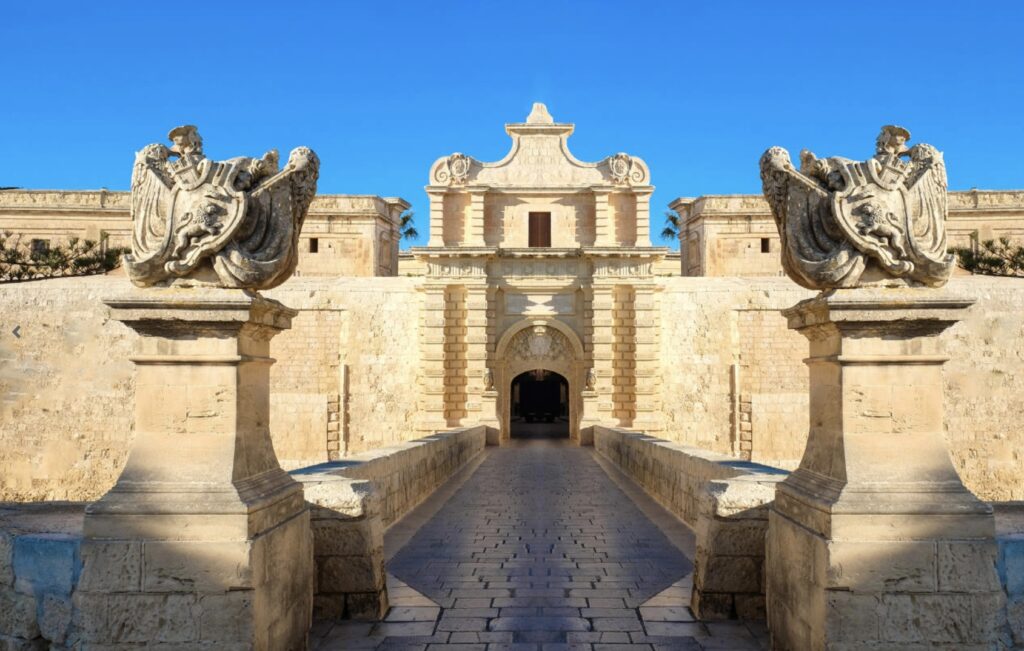
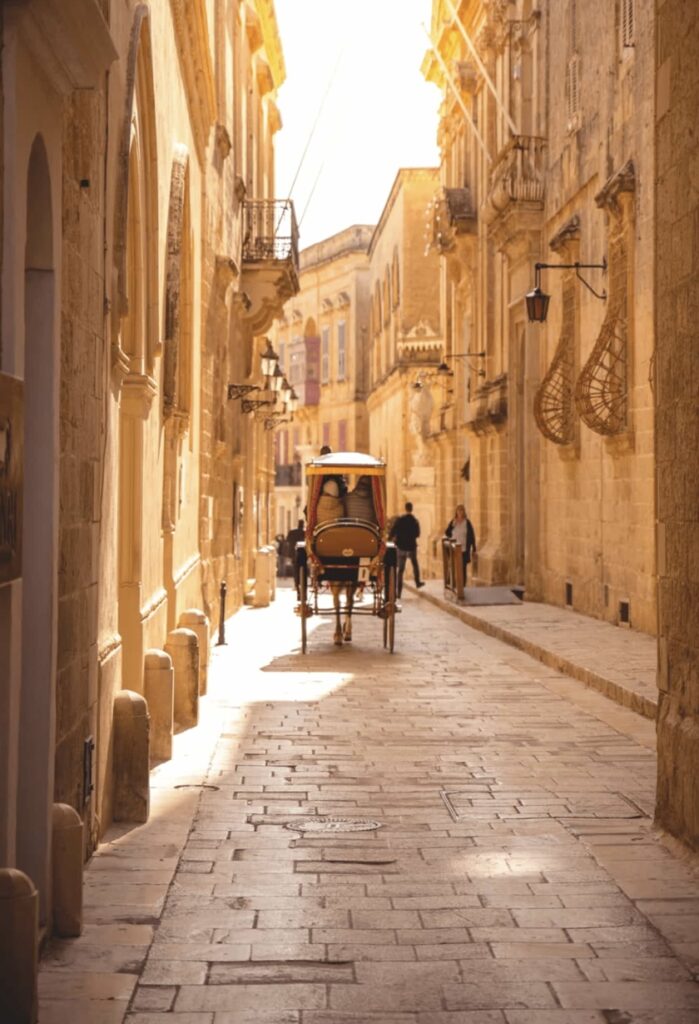
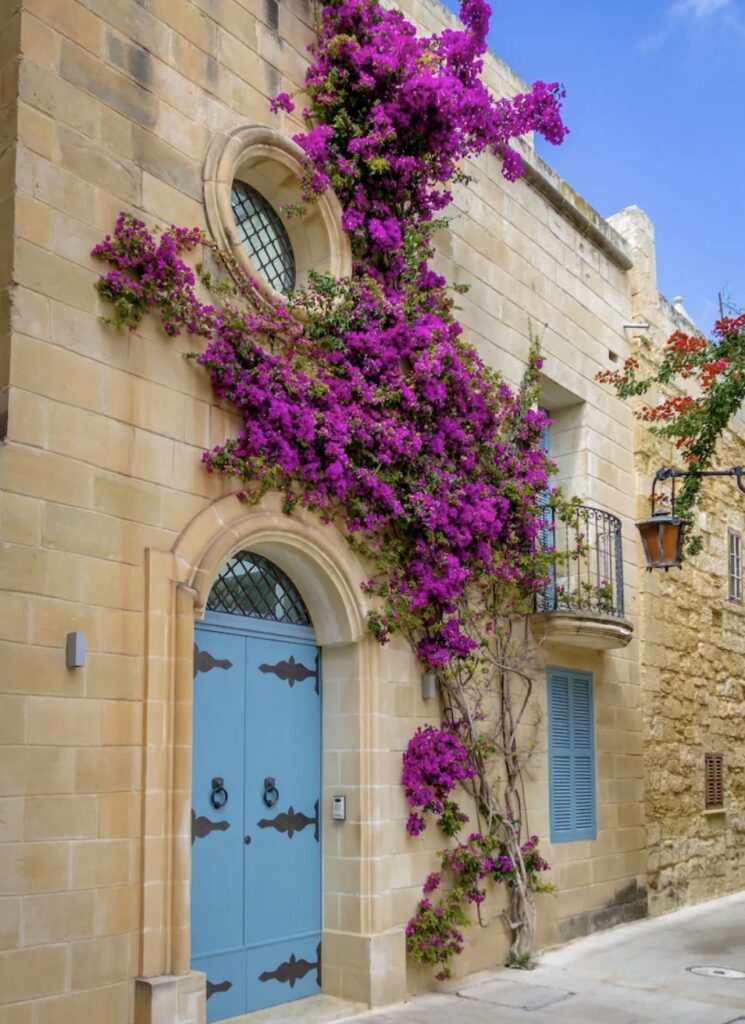
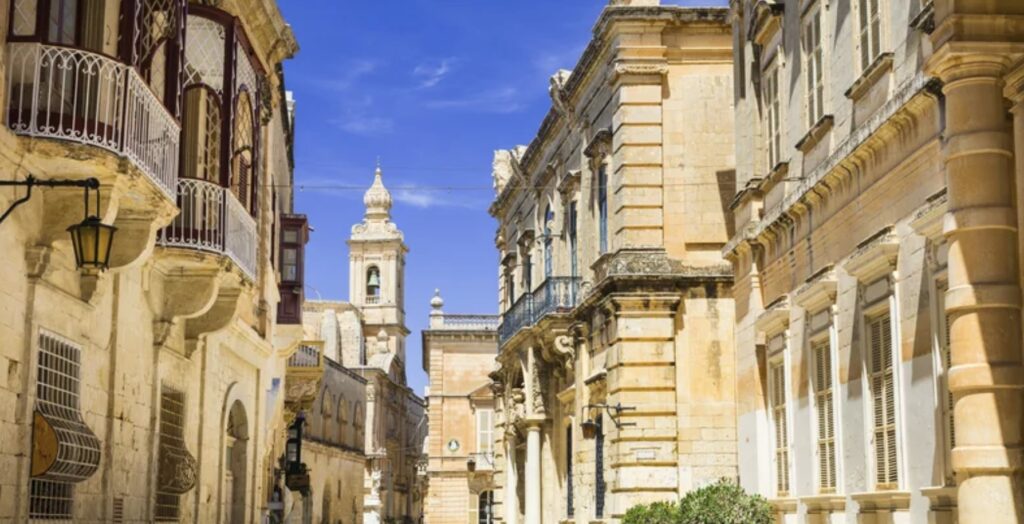
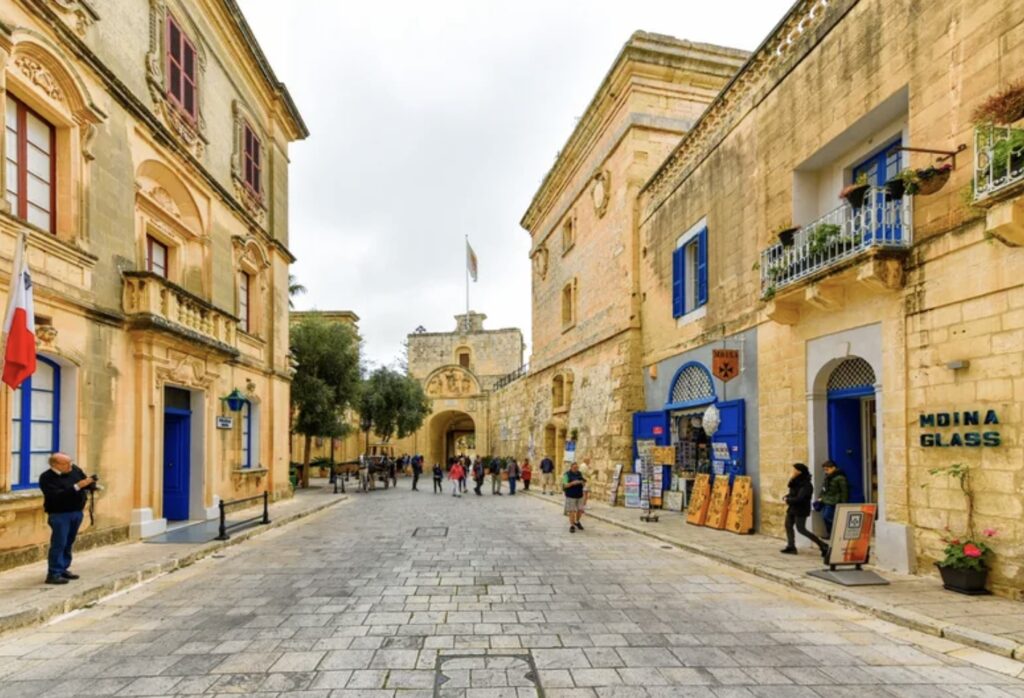
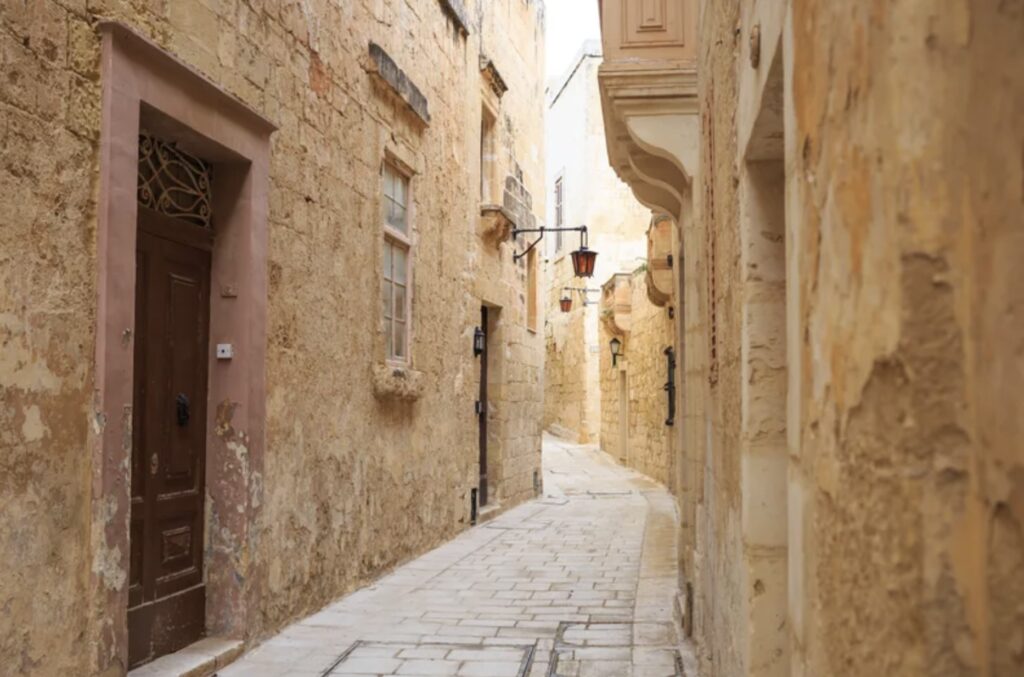
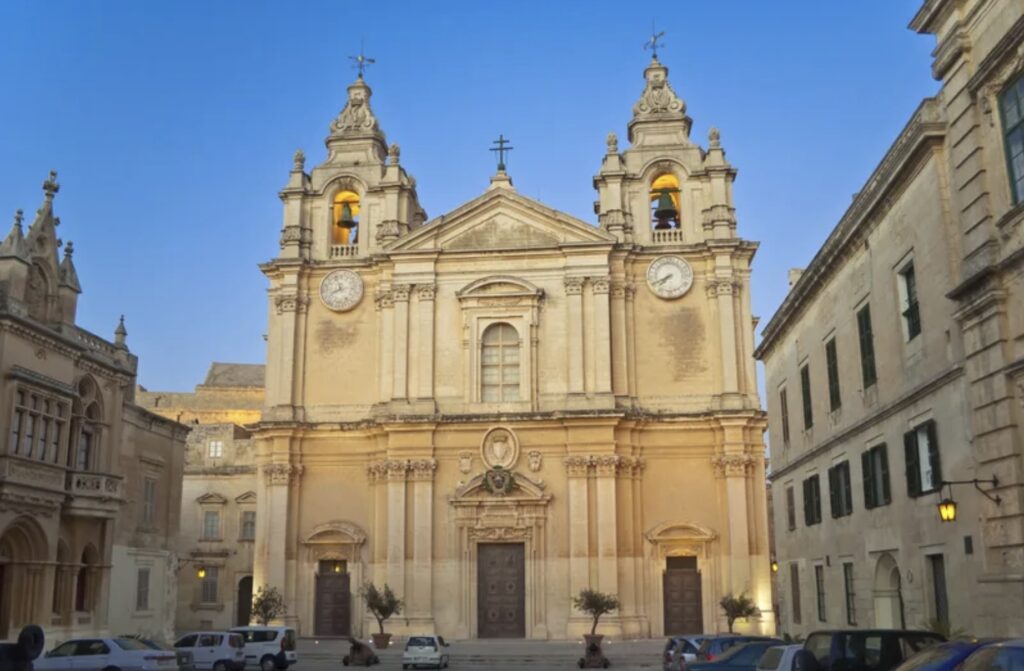
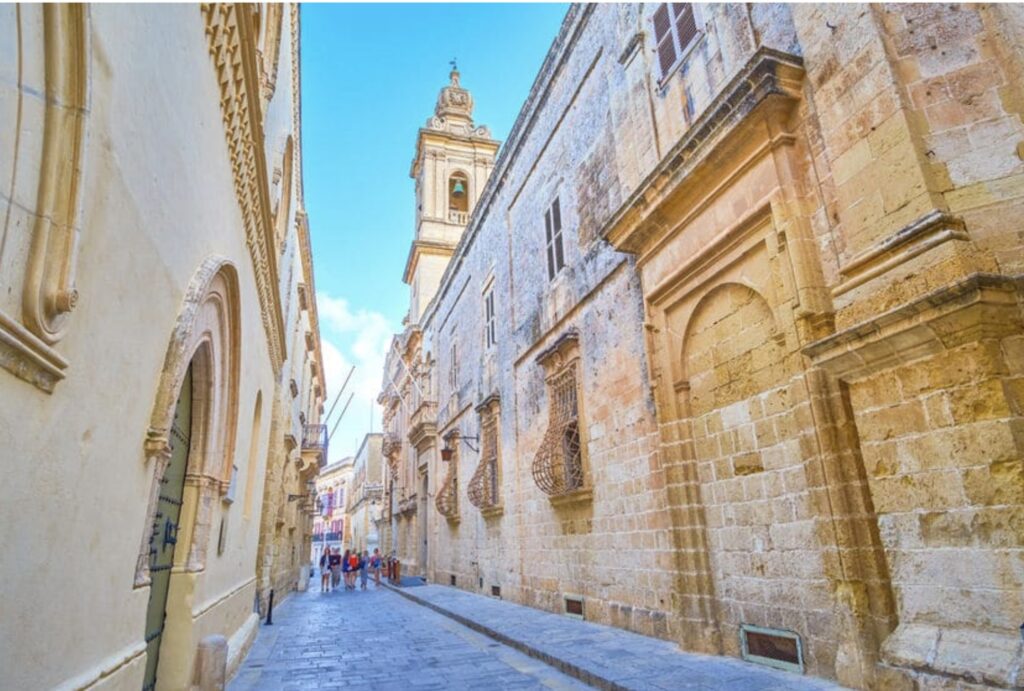
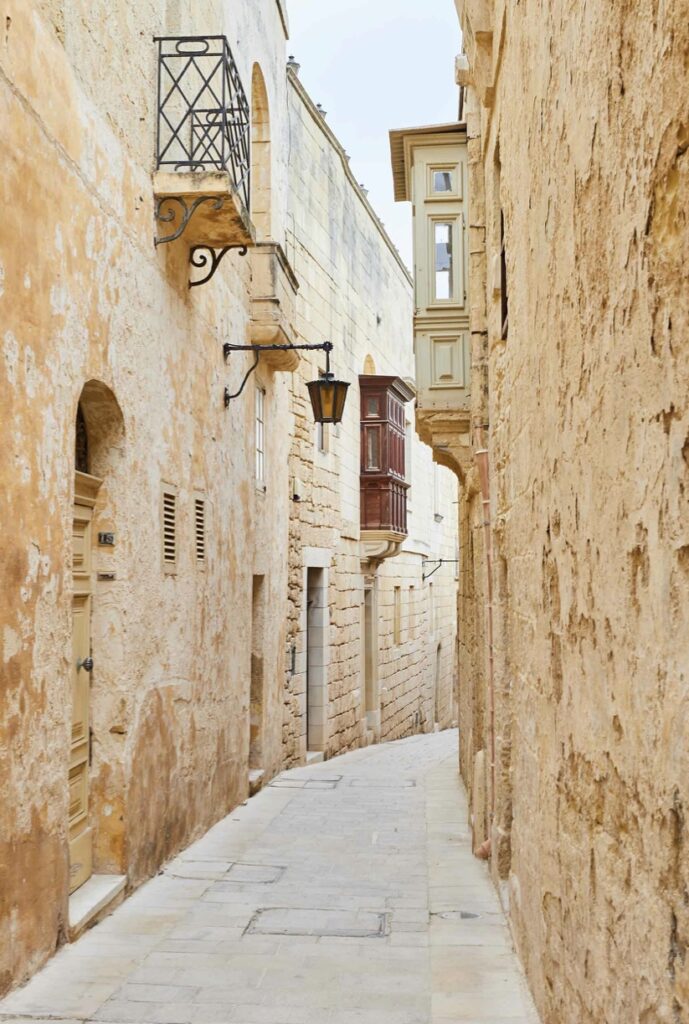
Malta has several local food specialties that you should try during your visit to Mdina. Here are a few recommendations:
Maltese Food Specialties
- Pastizzi:
- Flaky pastry filled with ricotta cheese or mushy peas. It’s a popular snack in Malta.
- Ftira:
- A traditional Maltese bread, often used to make sandwiches filled with ingredients like tomatoes, capers, olives, tuna, and local cheese.
- Rabbit Stew (Stuffat tal-Fenek):
- Malta’s national dish, consisting of rabbit slow-cooked with wine, garlic, tomatoes, and herbs.
- Lampuki Pie:
- A seasonal fish pie made with lampuki (dorado fish), available in autumn.
- Bragioli (Beef Olives):
- Thin slices of beef wrapped around a stuffing of breadcrumbs, eggs, and herbs, then slow-cooked in a rich tomato sauce.
- Bigilla:
- A dip made from mashed broad beans, garlic, and herbs, often served with Maltese bread or crackers.
- Kapunata:
- A Maltese version of ratatouille, made with tomatoes, eggplant, zucchini, and bell peppers.
- Qaghaq tal-Ghasel:
- Honey rings, a traditional Maltese sweet pastry filled with honey and spices.
Where to Try Them in Mdina
- Fontanella Tea Garden: Known for its cakes and desserts, it also offers a range of local snacks.
- Palazzo de Piro Bistro: A great spot for a more formal meal, offering local dishes with a modern twist.
- Don Mesquita Restaurant: Located in a quiet corner of Mdina, it’s known for traditional Maltese cuisine.
In Rabat (near Mdina)
- Crystal Palace: Famous for its pastizzi, it’s a must-visit spot for a quick, delicious snack.
- Ta’ Doni: Offers traditional Maltese dishes in a cozy setting.
Enjoying these local specialties will give you a taste of Malta’s rich culinary heritage!
One-Day Itinerary for Mdina and Nearby Hiking
Morning: Exploring Mdina
- 9:00 AM – Arrival and Mdina Gate
- Start your day by entering through the grand Mdina Gate. Take some time to appreciate the Baroque architecture and the historical significance of this entrance.
- 9:30 AM – St. Paul’s Cathedral and Museum
- Visit St. Paul’s Cathedral. Spend time exploring the interior, admiring the frescoes, and learning about its history. Don’t miss the adjoining museum, which houses religious artifacts and artwork.
- 11:00 AM – Palazzo Falson
- Walk to Palazzo Falson, a medieval palace now turned museum. Explore the rooms filled with antique collections, paintings, and historical artifacts.
- 12:00 PM – Vilhena Palace and National Museum of Natural History
- Head to Vilhena Palace, an 18th-century Baroque building. Tour the National Museum of Natural History located within the palace to learn about Malta’s natural heritage.
Lunch in Mdina
- 1:00 PM – Lunch at Fontanella Tea Garden
- Enjoy lunch at Fontanella Tea Garden, known for its delicious cakes and panoramic views of the countryside. Relax and take in the scenic surroundings.
Early Afternoon: More of Mdina
- 2:00 PM – Mdina Dungeons
- After lunch, visit the Mdina Dungeons to get a sense of medieval justice and punishment methods. It’s a fascinating, albeit eerie, experience.
- 2:30 PM – Walk through the Streets of Mdina
- Spend some time wandering the narrow, winding streets of Mdina. Visit smaller sites like St. Agatha’s Chapel and the Carmelite Priory, and enjoy the tranquil atmosphere.
Late Afternoon: Hiking around Mdina
- 3:30 PM – Depart for Rabat
- Exit Mdina and walk to the nearby town of Rabat. It’s a short walk, and Rabat has its own historical sites, like St. Paul’s Catacombs.
- 4:00 PM – Hiking around Dingli Cliffs
- Head to Dingli Cliffs, a short drive or bus ride from Rabat. These cliffs offer stunning sea views and various hiking trails. Take a leisurely hike along the cliffs, enjoying the natural beauty and the dramatic coastline.
Evening: Sunset and Departure
- 6:30 PM – Sunset at Dingli Cliffs
- Find a good spot at Dingli Cliffs to watch the sunset. The view of the sun setting over the Mediterranean Sea is breathtaking.
- 7:30 PM – Return to Mdina/Rabat
- Head back to Mdina or Rabat. If you have time, enjoy a quick evening stroll through the quiet streets before departing.
- 8:00 PM – Departure
- Conclude your day trip and head back to your accommodation or next destination.
Tips
- Comfortable Shoes: Wear comfortable walking shoes, as you’ll be exploring on foot.
- Sun Protection: Bring a hat, sunglasses, and sunscreen for the hike.
- Water and Snacks: Carry water and snacks, especially for the hike.
- Local Transportation: Use local buses or taxis to travel between Mdina, Rabat, and Dingli Cliffs if you don’t have a car.
